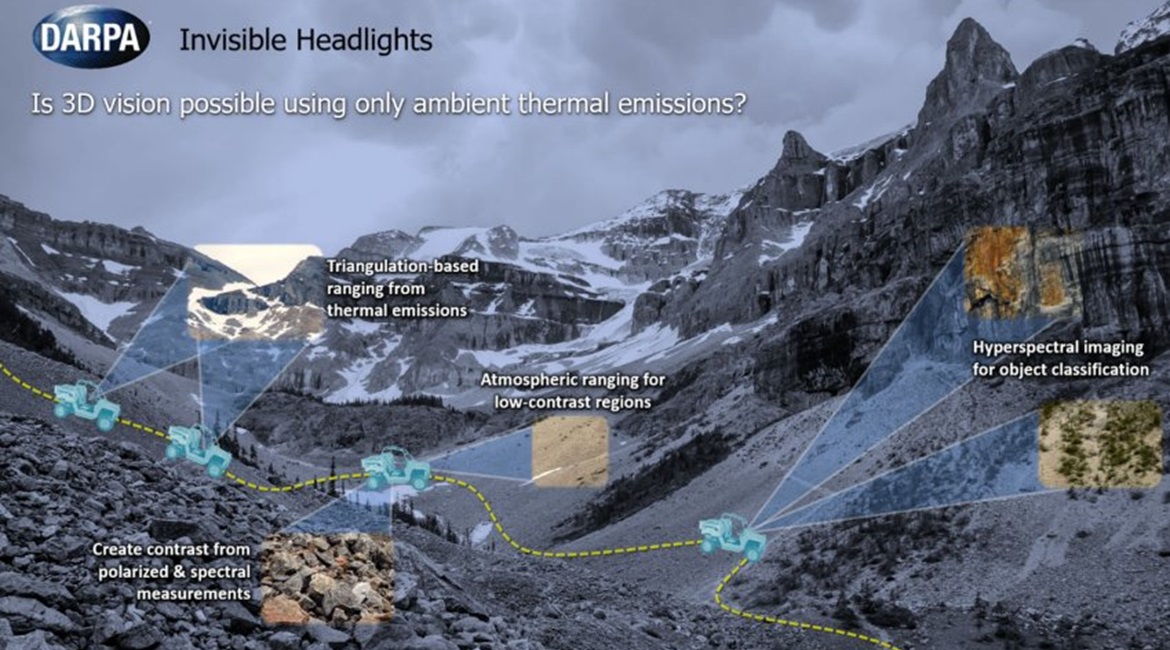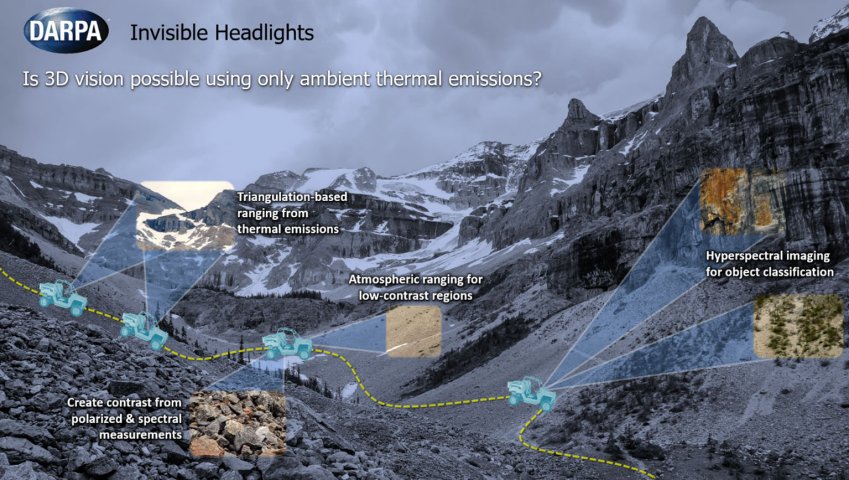
A new programme from the US Defense Advanced Research Projects Agency (DARPA) aims to address a key weakness of autonomous and semi-autonomous land systems: the need for active illumination to navigate in low-light conditions.
Unmanned systems rely on active illumination – anything that emits light or electromagnetic radiation, such as light detection and ranging (LIDAR) systems – to navigate at night or underground.

DARPA is pursuing improved methods to enable unmanned ground vehicles to navigate accurately in low-light conditions. (DARPA)
However, according to Joe Altepeter, programme manager in DARPA’s Defense Sciences Office, this approach creates significant security concerns, as such emissions could be detected by potential adversaries.
The Invisible Headlights programme aims to address this challenge by exploiting ambient thermal emissions, Altepeter explained, noting that “infrared light is emitted by everything in the world around us, whether animate or inanimate”.
The programme aims to discover what type of information can be captured from even an extremely small amount of thermal radiation, and develop passive sensors and algorithms that can build this information into 3D maps that unmanned systems could then exploit, rather than having to emit active illumination.
If the programme is successful, it could create benefits beyond the obvious security advantages, Altepeter told Jane’s . He pointed out that if an unmanned ground vehicle (UGV) or similar platform is effectively relying on a kind of light-based sonar to receive a very specific type of information if it employs LIDAR.
“The platform uses information on the distance from objects around it to build a kind of pixelated view of the world,” said Altepeter.
Looking to read the full article?
Gain unlimited access to Janes news and more...


